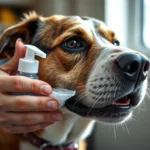
Nail care is an essential aspect of pet ownership that often gets overlooked. Many dog owners have questions about the right frequency for trimming their dog’s nails. Overgrown nails can cause discomfort and even lead to health issues if left unattended. The burning question remains: how often should you cut your dog’s nails? To shed light on this topic, we consulted veterinary experts to provide you with the most accurate information.
Understanding Dog Nail Anatomy
Structure of Dog Nails
Dog nails are quite different from human nails. A dog’s nail consists of various components, including the quick, nail body, and the surrounding nail bed. The quick is the sensitive part of the nail that contains blood vessels and nerves. When trimming your dog’s nails, it’s crucial to avoid cutting into the quick, as this can cause pain and bleeding.
Unlike human nails, which grow continuously and can be trimmed as needed, dog nails have a growth cycle influenced by factors like activity level and breed. Understanding the anatomy of your dog’s nails can help you appreciate the importance of regular maintenance.
Importance of Nail Health
Maintaining healthy nails is vital for your dog’s overall well-being. Overgrown nails can lead to various health issues, including:
- Joint pain: Long nails can alter your dog’s gait, leading to stress on joints.
- Injury risk: Long nails are more prone to breakage, which can cause pain and bleeding.
- Mobility issues: Overgrown nails can make it uncomfortable for your dog to walk or run, affecting their activity levels.
Regular nail trimming not only promotes comfort but also supports your dog’s mobility and overall health.
Signs That Your Dog’s Nails Need Trimming
Visual Indicators
One of the most obvious signs that your dog’s nails need trimming is their length. Ideally, a dog’s nails should not touch the ground when they are standing. If your dog’s nails seem to be clicking on the floor, it’s time for a trim.
Behavioral Signs
Pay attention to your dog’s behavior. If you notice any of the following, it may indicate that their nails require attention:
- Changes in walking or running habits: If your dog is favoring certain legs or seems to be limping, check their nails.
- Reluctance to engage in activities: A dog that enjoys running but suddenly avoids it may have discomfort due to overgrown nails.
Recommended Nail Length
The ideal nail length can vary depending on the breed and size of your dog. Generally, a well-maintained nail should be short enough to avoid touching the ground but long enough to maintain a healthy paw structure. Consult your veterinarian for breed-specific recommendations.
How Often Should You Cut Your Dog’s Nails?
General Guidelines
Most veterinarians recommend trimming your dog’s nails every 3-6 weeks. However, this can vary based on several factors:
- Age: Puppies may require more frequent trims as they grow, while older dogs might need less frequent attention.
- Activity Level: Active dogs that run on hard surfaces may naturally wear down their nails, reducing the need for trims.
- Breed: Certain breeds have faster-growing nails and may require more frequent maintenance.
Vet Recommendations
Veterinarians emphasize the importance of individualized nail care. Factors such as your dog’s lifestyle, age, and health can influence how often you should trim their nails. Regular vet check-ups can help establish a trimming schedule that suits your dog’s unique needs.
Tools and Techniques for Nail Trimming
Essential Tools
When it comes to trimming your dog’s nails, having the right tools is crucial. Here’s a quick overview:
- Scissor clippers: Great for larger dogs with thick nails.
- Guillotine clippers: Ideal for smaller dogs and provide a clean cut.
- Electric grinders: Useful for smoothing out rough edges after clipping.
Make sure to choose high-quality tools to ensure safety and effectiveness.
Step-by-Step Nail Trimming Process
-
Prepare Your Dog: Start by getting your dog comfortable. Use treats and praise to create a positive environment.
-
Positioning: Hold your dog’s paw firmly but gently. Ensure that your dog is calm and relaxed.
-
Trimming Technique: Identify the quick and avoid cutting into it. Trim just the tip of the nail, gradually working your way back until you reach the desired length.
-
Smoothing: If you’re using a grinder, follow up with it to smooth any rough edges.
-
Post-Trimming Care: Reward your dog with treats and affection to create a positive association with the process.
Tips to Avoid Cutting the Quick
To avoid cutting the quick, always trim a little at a time. If your dog’s nails are dark, it may be challenging to see the quick, so be extra cautious. If you do accidentally cut the quick, apply styptic powder to stop the bleeding.
Alternatives to Traditional Nail Trimming
Professional Grooming
If you’re uncomfortable trimming your dog’s nails, consider hiring a professional groomer. Groomers are trained to handle dogs of all temperaments and can often do the job more efficiently. During a grooming session, you can expect:
- Nail trimming
- Bathing
- Ear cleaning
Nail Grinding
Nail grinding is an alternative to clipping that some pet owners prefer. It can provide a smoother finish and reduce the risk of cutting the quick. To use a nail grinder effectively:
- Introduce it slowly to your dog.
- Start with short sessions to acclimate your dog to the sound and sensation.
- Gradually increase the duration as your dog becomes more comfortable.
Natural Wear and Tear
For active dogs, regular exercise on hard surfaces can help naturally wear down their nails. However, this does not eliminate the need for regular checks and occasional trimming.
Common Myths About Dog Nail Care
Myth 1: Dogs’ nails don’t need trimming if they go outside
Many people believe that outdoor dogs naturally wear down their nails. While this can be true to some extent, it’s not a guarantee. Regular checks are essential regardless of your dog’s lifestyle.
Myth 2: Trimming is painful for dogs
The misconception that nail trimming is painful for dogs is prevalent. In reality, if done correctly, trimming should not cause any pain. Ensure you’re using the right tools and techniques to create a positive experience.
Myth 3: You can only trim nails when they are visibly long
Regular maintenance is essential, even if your dog’s nails don’t appear overly long. Establishing a routine can prevent the nails from reaching an uncomfortable length.
FAQs About Dog Nail Trimming
How can I tell if I’ve cut the quick?
If you cut the quick, you will notice bleeding and your dog may react with discomfort. Apply styptic powder immediately to stop the bleeding.
What should I do if my dog is scared of nail trimming?
Start slowly by introducing your dog to the tools without trimming. Offer treats and praise, and gradually work up to short trimming sessions.
Can I use human nail clippers on my dog?
While it’s possible, it’s not recommended. Dog nail clippers are specifically designed to handle the unique structure of dog nails and are safer.
How to manage bleeding nails?
If you accidentally cut the quick, apply styptic powder to the nail to staunch the bleeding. If bleeding persists, consult your veterinarian.
Conclusion
Maintaining your dog’s nails is crucial for their health and comfort. Regular trimming can prevent various issues related to overgrown nails, promoting better mobility and overall well-being. While the general recommendation is to trim every 3-6 weeks, individual factors can influence this frequency. Always consult your veterinarian for personalized advice tailored to your dog’s specific needs. By prioritizing nail care, you foster a happier, healthier life for your furry friend.









